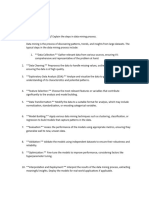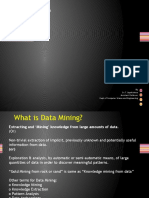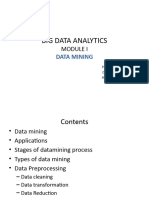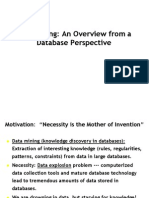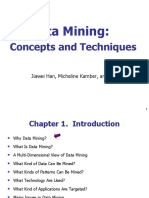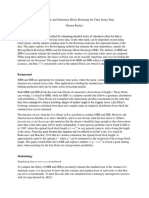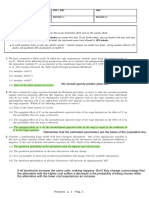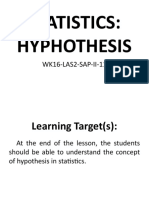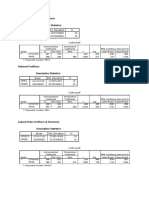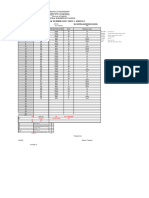0% found this document useful (0 votes)
30 views4 pagesData Mining Module 1 Theory
The document outlines the process of Knowledge Discovery in Databases (KDD) and its steps, emphasizing that Data Mining is a specific step within KDD focused on pattern extraction. It details the stages of the Data Mining process, various techniques used (such as classification and clustering), and the importance of data preprocessing, cleaning, and transformation. Additionally, it addresses major issues in data mining, including scalability and data quality, and discusses feature selection and dimensionality reduction techniques.
Uploaded by
abbulhasanshaikh3Copyright
© © All Rights Reserved
We take content rights seriously. If you suspect this is your content, claim it here.
Available Formats
Download as DOCX, PDF, TXT or read online on Scribd
0% found this document useful (0 votes)
30 views4 pagesData Mining Module 1 Theory
The document outlines the process of Knowledge Discovery in Databases (KDD) and its steps, emphasizing that Data Mining is a specific step within KDD focused on pattern extraction. It details the stages of the Data Mining process, various techniques used (such as classification and clustering), and the importance of data preprocessing, cleaning, and transformation. Additionally, it addresses major issues in data mining, including scalability and data quality, and discusses feature selection and dimensionality reduction techniques.
Uploaded by
abbulhasanshaikh3Copyright
© © All Rights Reserved
We take content rights seriously. If you suspect this is your content, claim it here.
Available Formats
Download as DOCX, PDF, TXT or read online on Scribd
/ 4












